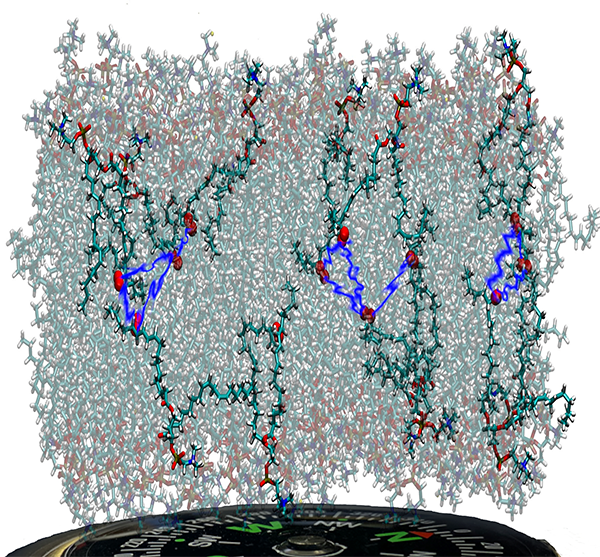
Our research delves into the fascinating realm of radicalized lipids within cell membranes, a phenomenon linked to cancer initiation. Specifically, cancer cells exhibit a higher concentration of radicalized lipids than normal cells, making quantifying these radicals a potential marker for the presence of cancer cells. These lipid radicals possess the ability to engage with one another, forming either a freely diffusing radical pair ("F-pair") or a cluster ("F-cluster") with entangled electron spins. Much like the radical pair mechanism observed in cryptochromes, the interaction of these radicals results in a chemical reaction, the outcome of which is contingent upon the angle of the magnetic field relative to the radicals.
Our research group, leveraging our theoretical expertise, is currently investigating to ascertain the persistence of these magnetic field effects in membranes. The study examines whether these effects endure despite the thermal motion-induced spin relaxation of the radical pair. By unraveling these intricate dynamics, we aim to contribute valuable insights into the interplay between magnetic fields and radicalized lipids within cell membranes, advancing our understanding of cancer-related processes at the molecular level.
